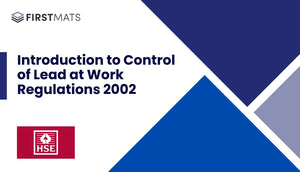Article Index:
Executive Summary: Workplace Health and Safety Statistics for Scotland, 2023
This is an executive summary of the HSE Report on workplace health and safety statistics for Scotland, 2023. It highlights key facts and statistics in a clear and concise manner to give an overview of the health and safety conditions in the Scottish workplace.
136,000 workers suffer from work-related ill health annually
According to the Labour Force Survey (LFS), an annual average of 136,000 workers in Scotland suffer from work-related ill health each year. This equates to a rate of 4,900 cases per 100,000 workers, a figure that is not significantly different from the Great Britain rate of 5,210 cases per 100,000 workers. The overall prevalence rate of 4,900 per 100,000 workers over the period 2020/21-2022/23 is statistically significantly higher than the rate from the previous 3-year period (HSE Report, page 5).
59% of new or long-standing conditions are stress, depression or anxiety
Stress, depression or anxiety account for 59% of new or long-standing conditions, with an estimated 80,000 cases reported annually. The prevalence rate of 2,880 per 100,000 workers over the period 2020/21-2022/23 is statistically significantly higher than the rate from the previous 3-year period (HSE Report, page 7).
24% of work-related ill health cases are musculoskeletal disorders
According to the LFS, musculoskeletal disorders (MSD) account for 24% of work-related ill health cases, with an estimated 32,000 cases reported annually. The prevalence rate of 1,140 per 100,000 workers over the period 2020/21-2022/23 is not statistically significantly different from the rate from the previous 3-year period (HSE Report, page 6).
40,000 non-fatal injuries to workers each year
The LFS reports an estimated 40,000 workplace non-fatal injuries annually, representing a rate of 1,510 cases per 100,000 workers. This rate for the period 2020/21-2022/23 was not statistically significantly different from the rate from the previous three year period (HSE Report, page 9).
26 fatal injuries to workers in 2022/23
According to the Reporting of Injuries, Diseases and Dangerous Occurrences Regulations (RIDDOR), there were 26 fatal injuries to workers in Scotland reported in 2022/23. This represents a rate of 0.71 fatalities per 100,000 workers, which is higher than the GB rate of 0.41 per 100,000 workers (HSE Report, page 10).
Scotland has higher fatal injury rate than Great Britain
Over recent years, the fatal injury rate in Scotland has been consistently higher than that of Great Britain. One explanation is that in Scotland, a greater proportion of workers are employed in higher risk industry sectors or higher risk occupations, compared with Great Britain as a whole (HSE Report, page 11).
Approximately 800 deaths and 1150 cancer registrations each year due to past workplace exposures
Estimates suggest that there are around 800 deaths and 1150 cancer registrations (excluding non-melanoma skin cancer) each year in Scotland where past workplace exposures to carcinogens contributed (HSE Report, page 8).
£1.9 billion cost of workplace injury and ill health
The total cost to Scotland of workplace injuries and ill health in 2021/22 was £1.9 billion, according to the HSE Costs to Britain model (HSE Report, page 12).
Scotland's fatal injury rate remains high after standardisation
Even after standardising the fatal injury rates to account for differences in industry composition, the rate in Scotland is still significantly higher. This suggests that other factors, such as a different occupational distribution and other factors not related to employment, are also affecting the comparison (HSE Report, page 11).
3.5 million work days lost to work-related ill health each year
On average, 3.5 million days are lost to work-related ill health each year in Scotland, at a rate of 1.6 days lost per worker. This data is sourced from the LFS, annual average 2020/21-2022/23 (HSE Report, page 5).
Conclusion
This executive summary of the HSE Report provides a snapshot of the health and safety conditions in the Scottish workplace. The data highlights the ongoing challenges in managing work-related ill health and injuries, and the significant costs associated with these issues. It underscores the need for continued efforts in improving workplace health and safety.







